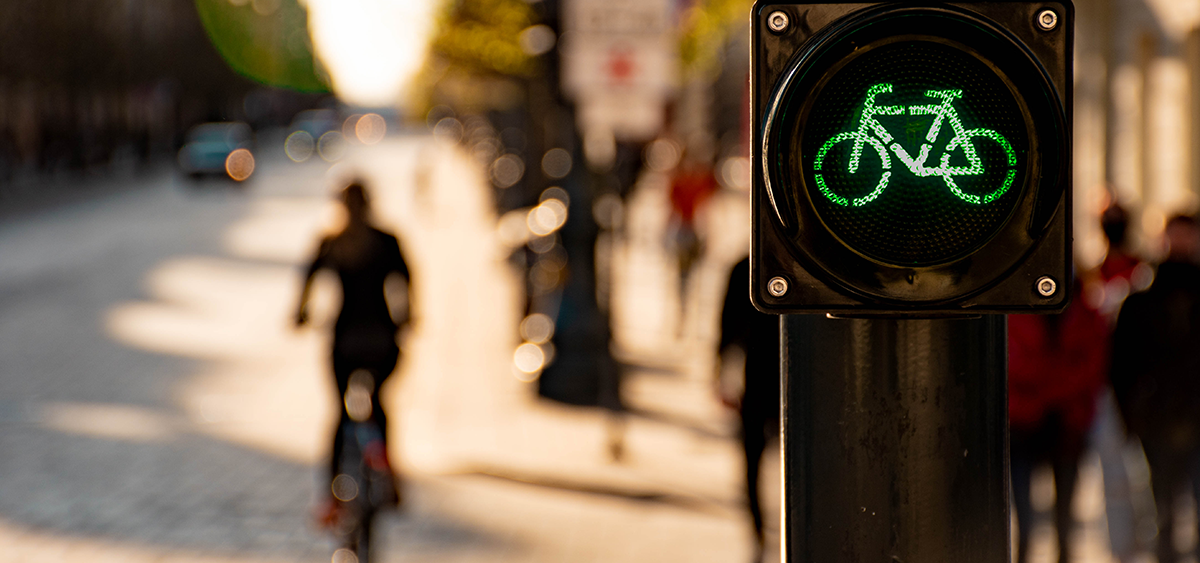We’re now well into bike riding season. Riding a bike is an enjoyable and healthy way to get around. To keep it that way – and avoid problems – here are seven things you should know. Try our quiz and test your knowledge!


Yes.
Whether at night or during the day, you must ensure you are visible to others on the road. Your bike must therefore be equipped with reflectors in front, in the back, on the wheels, and on the pedals. What’s more, you must have lights when riding at night: a white one in front and a red one in the back.
You must also signal what you are about to do, particularly when you intend to turn:
- To turn left, extend your left arm horizontally.
- To turn right, extend your right arm out horizontally or your left arm out horizontally with your hand and forearm raised upward.
If you don’t follow these rules, you could face a fine of $80 to $100.
No.
In most cases, you must ride your bike on the road as far to the right as possible. And you must ride in the same direction as traffic.
But there are exceptions to these general rules. You can move farther from the right side to avoid obstacles like someone opening their car door or a part of the road that’s in poor condition. You also don’t have to stay as far to the right as possible:
- if you are turning left,
- if the road signs indicate you can ride in the opposite direction of traffic, or
- in case of necessity, for example, to avoid being in danger.
No.
Since 2018, you can’t get demerit points for cycling infractions. However, the amount you can be fined has gone up. It used to be $15 to $30 and is now $80 to $100.
It depends.
If you’re in an accident involving a car, you may be eligible for compensation from the Société de l’assurance automobile du Québec (SAAQ or Quebec automobile insurance board).
However, if you have an accident involving another cyclist or a pedestrian, you won’t be eligible for compensation from the SAAQ. You could ask the other person to compensate you if you believe they were at fault and caused you harm, like a physical injury.
| Are you curious about how civil liability works? There are legal rules to know when it comes to receiving compensation for damages. |
Yes.
While you are allowed to bike after drinking alcohol, it is forbidden to drink while biking.
What’s more, a police officer could ask that someone accompany you home if they see that you are a danger to yourself or others. They may also hold your bike until it is safe for you to do ride it again.
| Whether you’re on a bike or not, you need to be careful. The law severely punishes endangering human life and safety. Fines can range from $1,000 to $3,000. |
No.
Your bike must carry:
- 6 reflectors (two at the front and rear of the bike, one on each pedal and one attached to the spokes of each wheel), and
- At night, a white headlight or light at the front and a red taillight at the rear.
If you break one of these rules, you could receive a fine between $80 and $100.
| You can find an illustration of where each of the mandatory accessories must be installed on your bike on the SAAQ’s website. |
It depends.
Rules concerning public property, like lampposts, street signs or benches, are the responsibility of municipalities or boroughs.
Some boroughs in the City of Montreal prohibit locking bikes to trees or public property. Fines can range from $30 to $60.
Contact your municipality or borough to know which rules apply to you.







